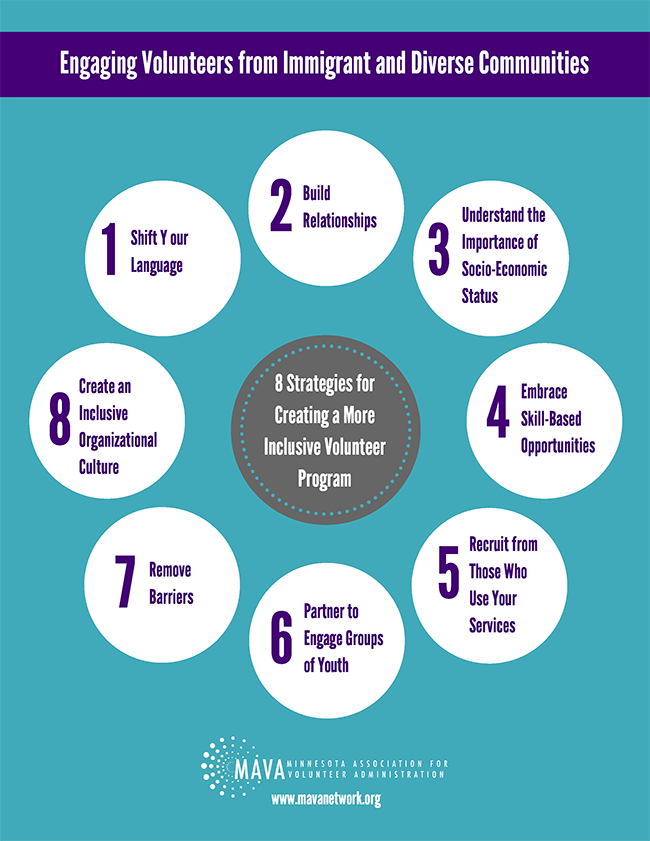8 Strategies for Creating a More Inclusive Volunteer Program
By Lisa Joyslin, Inclusive Volunteerism Program Manager, Minnesota Association for Volunteer Administration
Do volunteers at your organization represent the racial and ethnic diversity of the community you serve?
The answer, for most governments and nonprofit organizations, is “no.”
But this can change.
The Minnesota Association for Volunteer Administration has spent the last year researching the challenges, barriers and best practices for volunteers from immigrant and diverse communities. While this project focused particularly on government organizations, the findings can largely be applied across both government and nonprofit entities. To reach these findings, MAVA built on several previous initiatives and conducted new research to more deeply explore questions such as:
- How is the concept of volunteerism understood and perceived in racially and ethnically diverse communities?
- What barriers currently exist to engaging diverse and immigrant populations as volunteers with government organizations, and how can these barriers be overcome?
- What outreach or recruitment strategies are most effective in immigrant and diverse communities?
- Are there particular volunteer roles that are more appealing to people of diverse backgrounds and, if so, how can governments or organizations develop these roles?
- What efforts have organizations found successful in engaging diverse and immigrant volunteers, and how can other entities replicate these efforts?
The result of this research is a set of eight strategies for engaging diverse and immigrant volunteers, which governments and organizations can develop into an action plan for change.
Some of the strategies are relatively simple. For example, we heard from a number of people new to this country that the word “volunteer” is not well understood in their community. Framing volunteerism in terms of how they can help their neighbors is a more effective way to discuss how they might be involved. And focusing on how someone might help their community, as opposed to how they will help your organization, will be a more compelling recruitment message.
Other strategies are much more difficult, like building relationships with communities of color and creating an inclusive organizational culture. While employing these strategies will not happen overnight, starting today by taking small steps forward will slowly build inclusion into your volunteer program in the months and years to come.
All eight strategies are represented in the infographic below, and the executive summary of MAVA’s report (featuring a brief overview of all eight strategies) is available at www.mavanetwork.org/inclusive.
If you would like to receive the full report or discuss MAVA’s work, contact Lisa Joyslin.

